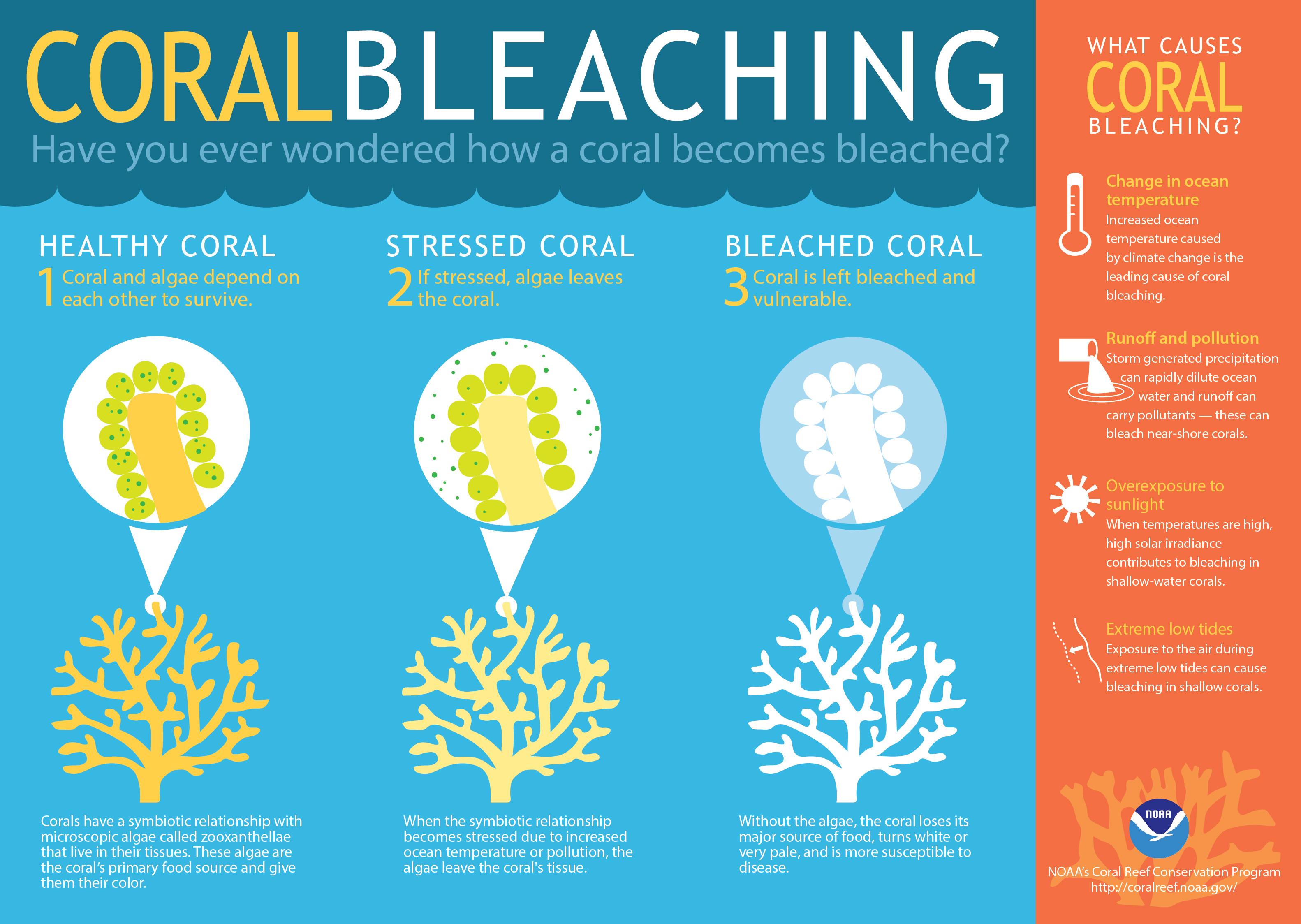This term, 6B have been learning about Climate Change in Geography. They have amazed and impressed me so much with their ideas and the discussions we have had. Today we watched this clip and it really struck a chord with us. We wanted to share it with you to watch and hopefully it inspires you to take action.
Tag: geography
Geography: Climate Change and Habitat Destruction

Today, we learnt about the impact of habitat destruction as a result of climate change. Our lesson was focused on coral bleaching in coral reefs, such as the Great Barrier Reef. We discovered that coral and algae have a symbiotic relationship (they are BFFs), but if the temperature of the water gets too warm, the coral gets stressed, and algae exits the coral’s polyps because it doesn’t want to deal with stressed out coral. Because the algae is what gives coral its beautiful colour, and also provides its main food source, the coral begins to fade to white and starves. When you see white coral, you are looking at bleached coral, which is a skeleton of what was once full of life and beauty.

Here is a video explaining the effects of climate change on coral reefs in more detail:
Here is a clip about a fantastic program, called Coral Watch, where anyone can help scientists keep track of the state of health of coral and water temperatures in over 50 countries worldwide.
Geography: Effects of Climate Change
5B are learning all about Climate Change in Geography this term. Climate Change is a hot topic (please forgive me for that terrible pun) at the moment. So far we have looked at the following areas:
- Climate versus Weather
- The Carbon Cycle
- The Greenhouse Effect
- Historical Global Climates (Ice Age and Cretaceous Period)
- Contemporary Climate Change
- Effects of Climate Change
Areas that we will be learning about later in the term include:
- Habitat Destruction
- Climate Sceptics
- What Can We Do?
Below is a GIF demonstrating the rise in temperature from 1850 – 2016. 
This week we discussed two of the major impacts of Climate Change, rising sea levels and an increase of certain types of extreme weather phenomena. This week’s lesson made links with our Science topic this term, Extreme Weather Phenomena.
Rising sea levels is a major problem for our planet. Because of the increased amount of carbon dioxide in our atmosphere, land and ocean temperatures are rising due to the invisible blanket formed around the planet. As water gets warmer, it expands. Oceans swelling cause sea levels to rise. In areas of the world where land is sinking, such as Southern England, this is not ideal. Melting ice caps are also contributing to this issue.
Here is the link for Coastal Risk Australia, a website that uses Google Map technology to show you predictions of areas at risk of coastal flooding in the year 2100, due to Climate Change. Type in your address and find out what you can expect to see happening in the future. To make matters even worse, we can expect more natural disasters as a result of Climate Change. Extreme weather phenomena such as droughts, floods, and bushfires are expected to increase in both frequency and severity.
To make matters even worse, we can expect more natural disasters as a result of Climate Change. Extreme weather phenomena such as droughts, floods, and bushfires are expected to increase in both frequency and severity. I have been thoroughly impressed with how engaged 5B have been with this area of study. My hope is that they are informed about such an important issue and are able to use their knowledge to combat this issue.
I have been thoroughly impressed with how engaged 5B have been with this area of study. My hope is that they are informed about such an important issue and are able to use their knowledge to combat this issue.
